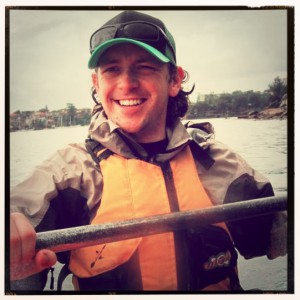Natural history research—a supply and demand industry? (James O’Hanlon, March 2015)
We have a product: popular science communication. And we have a market: the public. Can there be a business model that caters for this demand? James O’Hanlon, Australian zoologist, raises the question whether exploratory research should be driven by a supply and demand mechanism.

Dr James O’Hanlon is a research scientist, natural historian and science communicator from Sydney Australia.
Natural history research can be unfairly characterised as frivolous, or unprofitable due to the unpredictable outcomes of pure scientific exploration. I argue that natural history information is a high demand product. This raises an important question; can natural history research be funded by public demand for the product?
In applied sciences, companies and stakeholders that profit from research supply funding. In these cases research is not solely driven by desire for exploration, it is a necessary investment that companies make towards the quality of their products. It is simple supply and demand. Often companies endeavour to establish their own research teams and laboratories as a means of product development.
In contrast to applied science, exploratory researchers and natural historians generally do not work in private, for-profit companies; they work in museums and universities – institutions that rely on competitive funding sources such as those offered by governments. This funding is becoming increasingly hard for exploratory researchers to obtain especially when they must compete against researchers in applied and industrial fields.
This assumes however that natural history research provides no immediately monetisable product. But what about the innumerable wildlife documentaries, natural history magazines, science blogs, newspaper articles and popular science books we so love to enjoy? The discoveries made by natural history researchers provide the content for these factual documentaries and non-fiction works. What can often be summarised in a short blog post or short film segment has been made possible by years of scientific research.
Many of these science media outlets are for-profit industries. To make this profit media outlets need to generate content to sell to audiences. It seems only logical then that media outlets focussing on natural history should be making large investments in their product, i.e. natural history discoveries and exploratory research. We should ask whether exploratory research be driven by a supply and demand? We have a product (popular science communication), and we have a market (the public), can there be a business model that caters for this demand?
This is not unprecedented. National Geographic and Australian Geographic offer funding for research and exploration expeditions. The crowd funded magazine Biosphere plans on offering grants in the near future and stipulated this in their crowd funding campaign. By incorporating this into their business model they are able to generate original content and gain access to popular publication rights. The benefits for researchers are mutual – they receive funding and their discoveries find exposure beyond the limited reaches of academic publishing.
The list of science communicators that invest in their product is very short and does not reflect the immense output of the scientific media. Science communicators and researchers need to work closer together for mutual benefit. I implore the consumers of natural history ‘products’ to support those companies that invest in their product by funding research. Additionally, crowd-funding campaigns enable consumers to directly invest in research that they care about.
The long-term benefits and applications of natural history research are immense and immeasurable. But we should not forget that there is immediate public demand for natural history research, and we should recognise its importance when making decisions about research funding.
Dr James O’Hanlon
is a research scientist, natural historian and science communicator from Sydney Australia. He is interested in working closer with communicators, writers and filmmakers in working towards a new era of science communication where researchers and communicators form collaborative enterprises. You can find our more about James on his blog www.jamesohanlonresearch.wordpress.com or follow him on twitter @jamohanlon.
Links to exploratory research funders
- http://www.biosphereonline.com/
- http://www.australiangeographic.com.au/society/sponsorship/2013/11/apply-for-sponsorship
- http://www.nationalgeographic.com/explorers/grants-programs/cre-fund/
- Claire Price of Crastina receives outreach award from Royal Society of Biology - October 25, 2020
- Agile Science student project at Brussels Engineering School ECAM: “We can’t wait to try it again!” - August 28, 2020
- Create an infographic in the Lifeology SciArt Infographic Challenge - June 16, 2020
- Adam Ruben – The scientist that teaches undergraduate students comedy - March 27, 2020
- Sam Gregson, Bad Boy of Science: “Comedy helps to bridge the gap” - March 10, 2020
- The Coolest Science Merchandise of 2019 - December 16, 2019
- Science Media Centre (UK) offers guide on dealing with online harassment in academia - November 26, 2019
- Agile project management taught to students and researchers at Karolinska Institutet - September 20, 2019
- Stefan Jansson: Improve your credibility! (Crastina Column, September 2019) - September 6, 2019
- The People’s Poet: Silke Kramprich, tech communicator - August 31, 2019




Leave a Reply
Want to join the discussion?Feel free to contribute!